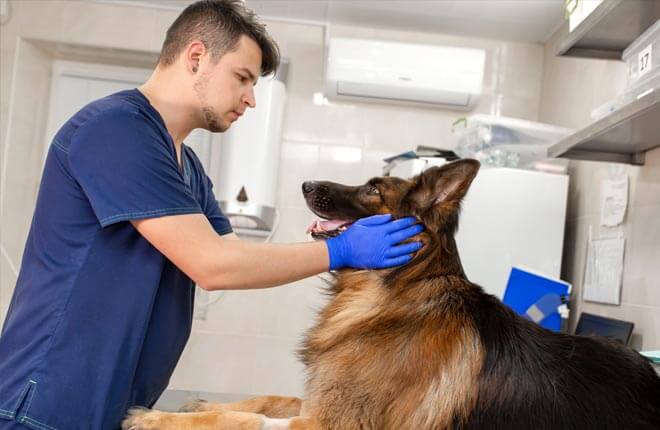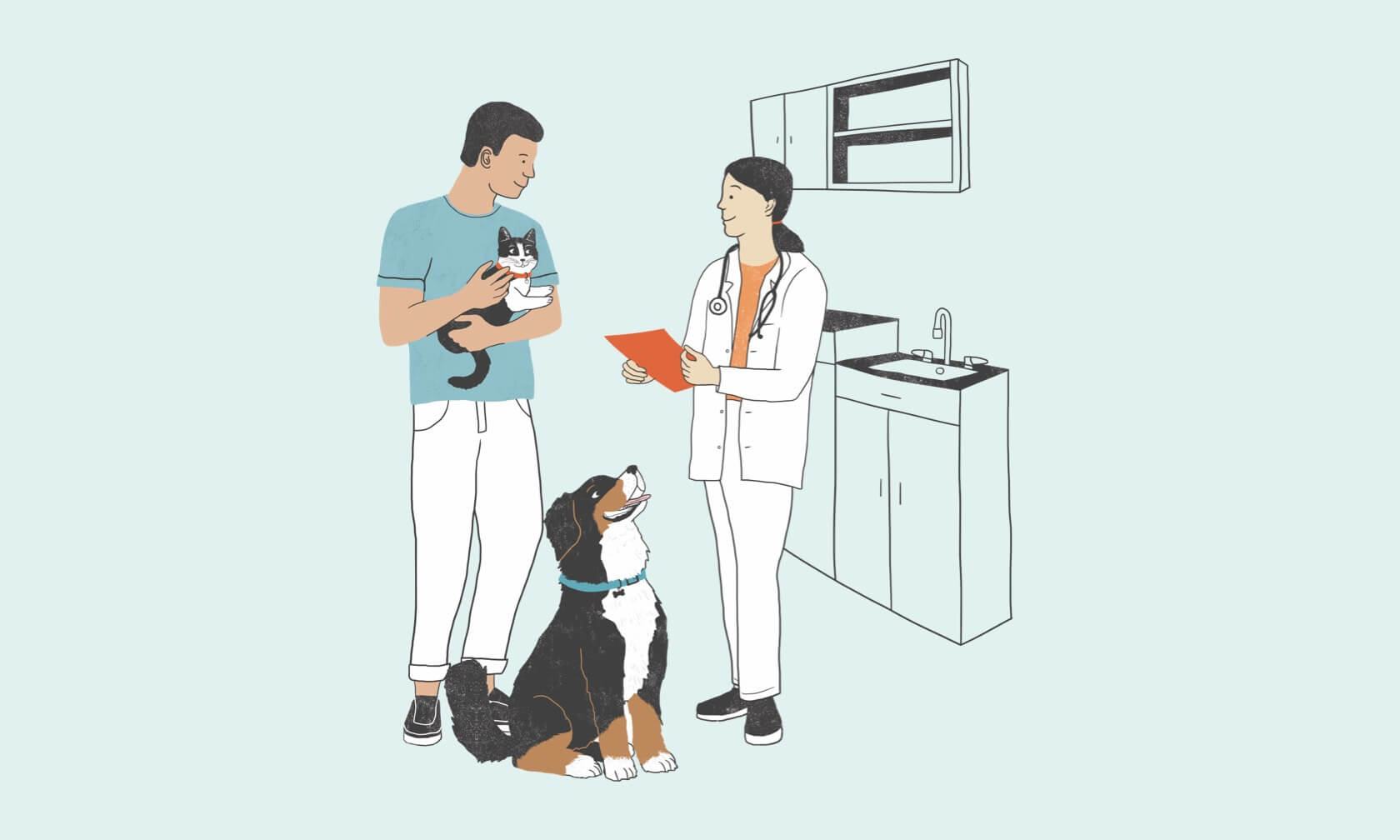Anemia in dogs is not a disease itself, but rather it results from some other disease process or condition. It’s a term used to describe a decrease in the number of circulating red blood cells (RBCs) — the blood cells that bring oxygen to the tissues and organs of the body.
How Do You Know If Your Dog Is Anemic?
During the early stages of anemia, or if it’s mild, you may not notice any signs. This is why routine blood screenings should be performed by your veterinarian on a regular basis.
Noticeable Signs That Indicate Anemia in Dogs
- Pale mucous membranes
- Black stools
- Bruising found on the skin
- Fatigue or weakness
- Rapid pulse
- Rapid breathing
- Poor appetite
- Weight loss
What Causes Anemia in Dogs?
Anemia can happen gradually over months due to chronic disease or can come on suddenly, especially if it’s the result of an injury. There are three leading causes of anemia in dogs:
- Blood loss. Potential causes can include tumors, viruses like canine parvovirus, or trauma.
- Destruction of red blood cells. Potential causes can include cancer, Immune-mediated hemolytic anemia (IMHA), or ingestion of certain toxins or chemicals.
- Decreased production of red blood cells. Potential causes can include chronic kidney or liver disease, hypothyroidism, or other chronic diseases.
Testing for Anemia
When anemia is detected, the severity is determined when a complete blood count (CBC) is performed. A CBC is performed by your veterinarian using a hematology analyzer that they have in the hospital. This testing and analysis is performed before surgeries, during diagnostic screenings if your pet is sick, and as part of routine testing during for wellness evaluations.
Next, it must be determined if the anemia is regenerative or non-regenerative. With regenerative anemia, the bone marrow responds to a decrease in the number of circulating RBCs and increases RBC production. With non-regenerative anemia, there is a lack of response by the bone marrow, and new RBCs are not generated. This classification of anemia helps determine the underlying cause or diagnosis for your pet.
Along with classification of regenerative or non-regenerative anemia, the severity of the anemia must be determined to recommend treatment. In many cases the anemia is mild and focusing on the underlying disease is sufficient. In some cases, the anemia may be severe, and treatment to correct the red cell count may be required.
Treatment of Anemia in Dogs
Treatment is based on the underlying cause, as well as the severity of the anemia. In some cases, if the anemia is mild, just treating the underlying cause can correct the issue. But in other cases, with severe anemia, blood transfusions, or other therapy may be needed.
Your veterinarian will develop a treatment plan specifically for your pet’s condition. Treatment plans can include anything from medications to surgery. During treatment, your veterinarian will have to perform regular diagnostic tests on your dog’s blood to determine if there are improvements in the RBC values. Based on those values, treatment plans will possibly be altered.
This is a list of some of the treatments that may be recommended.
- Medications such as antibiotics, gastrointestinal protectants, steroids, or even changes to existing medications
- Parasite or de-worming medications
- Blood transfusion
- IV fluids
- RBC hormone replacement
Is Prevention of Anemia Possible?
Some causes of anemia are preventable — for example, using parasite prevention year-round for fleas, ticks, and intestinal worms. Avoid the risk of toxins and poisoning by keeping all potential hazards, such as chemicals and medications, safely out of reach. Providing your pet with a well-balanced diet to help maintain good health is also critical in helping prevent anemia.
Having your dog examined by their veterinarian every 6–12 months, and performing routine blood screenings, helps your veterinarian monitor your dog’s health better. Routine lab work allows them to observe ‘trends’ in your pet’s values and detect health issues sooner. What may be in the normal range may not be what is ‘normal’ for your pet. This can only be determined when regular lab testing is performed, especially before your dog is sick.
The earlier that signs and causes of anemia are detected, the sooner treatment can be provided and the sooner your dog can return to optimal health.
ZPC-01357R1



